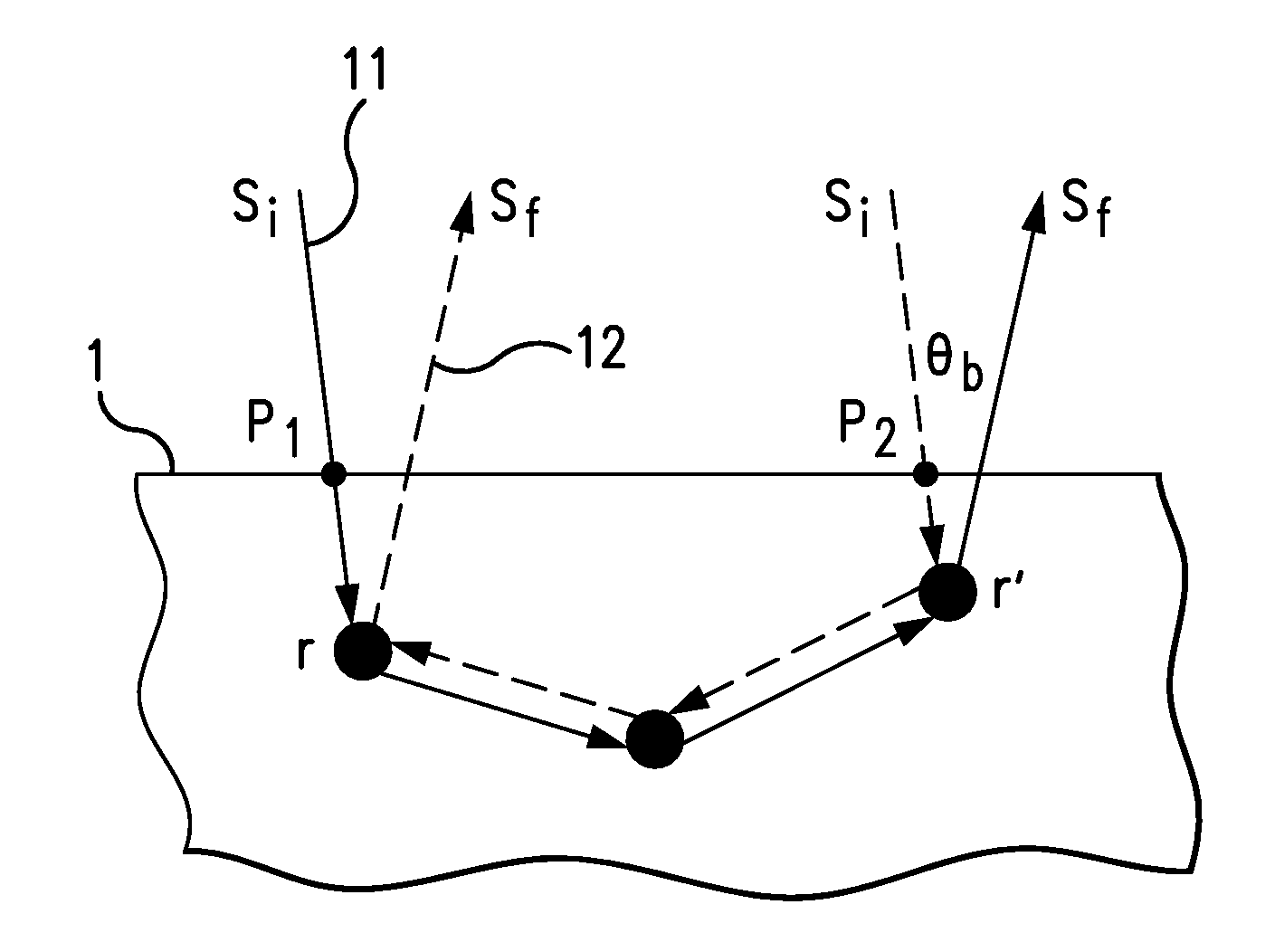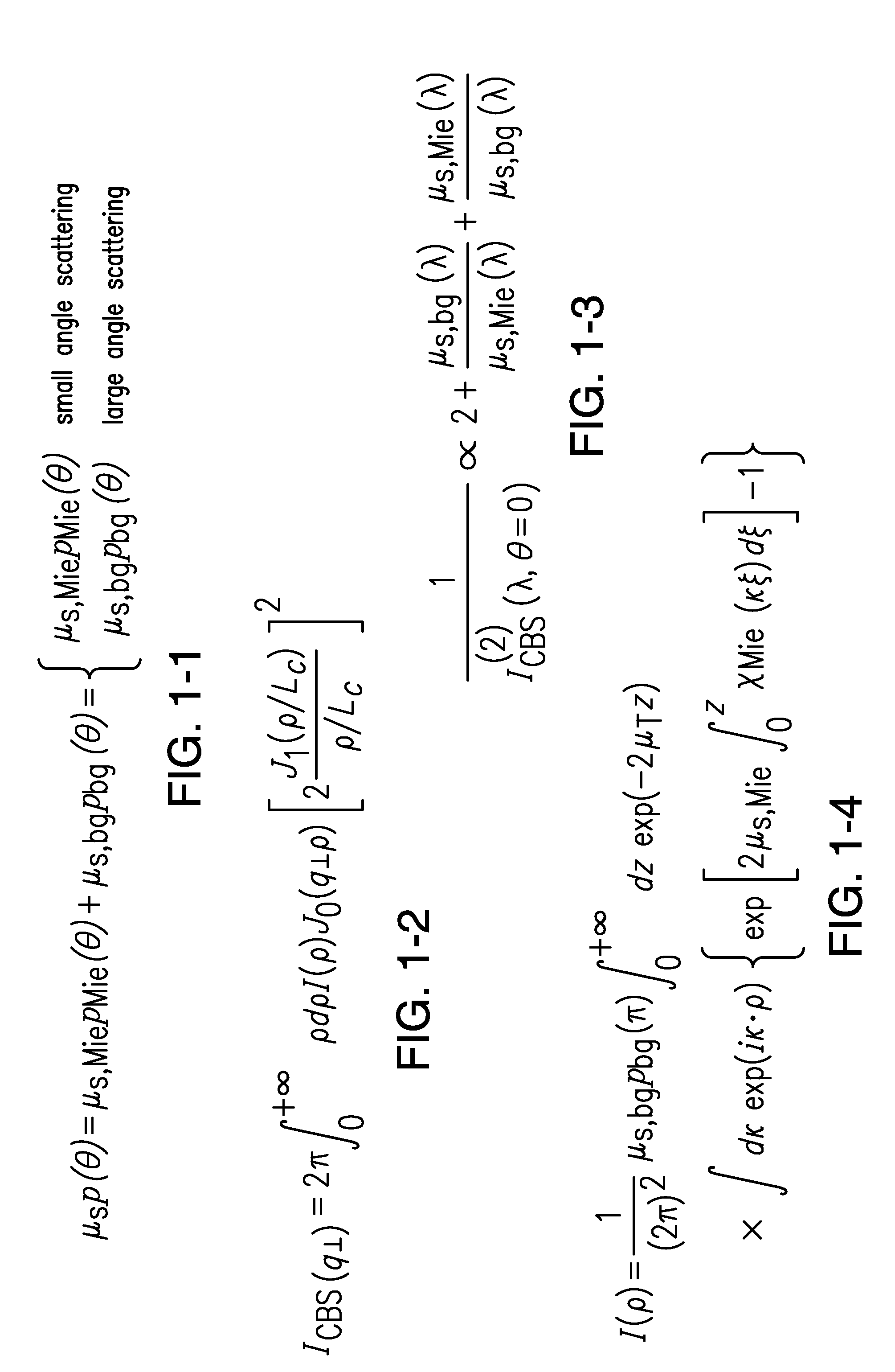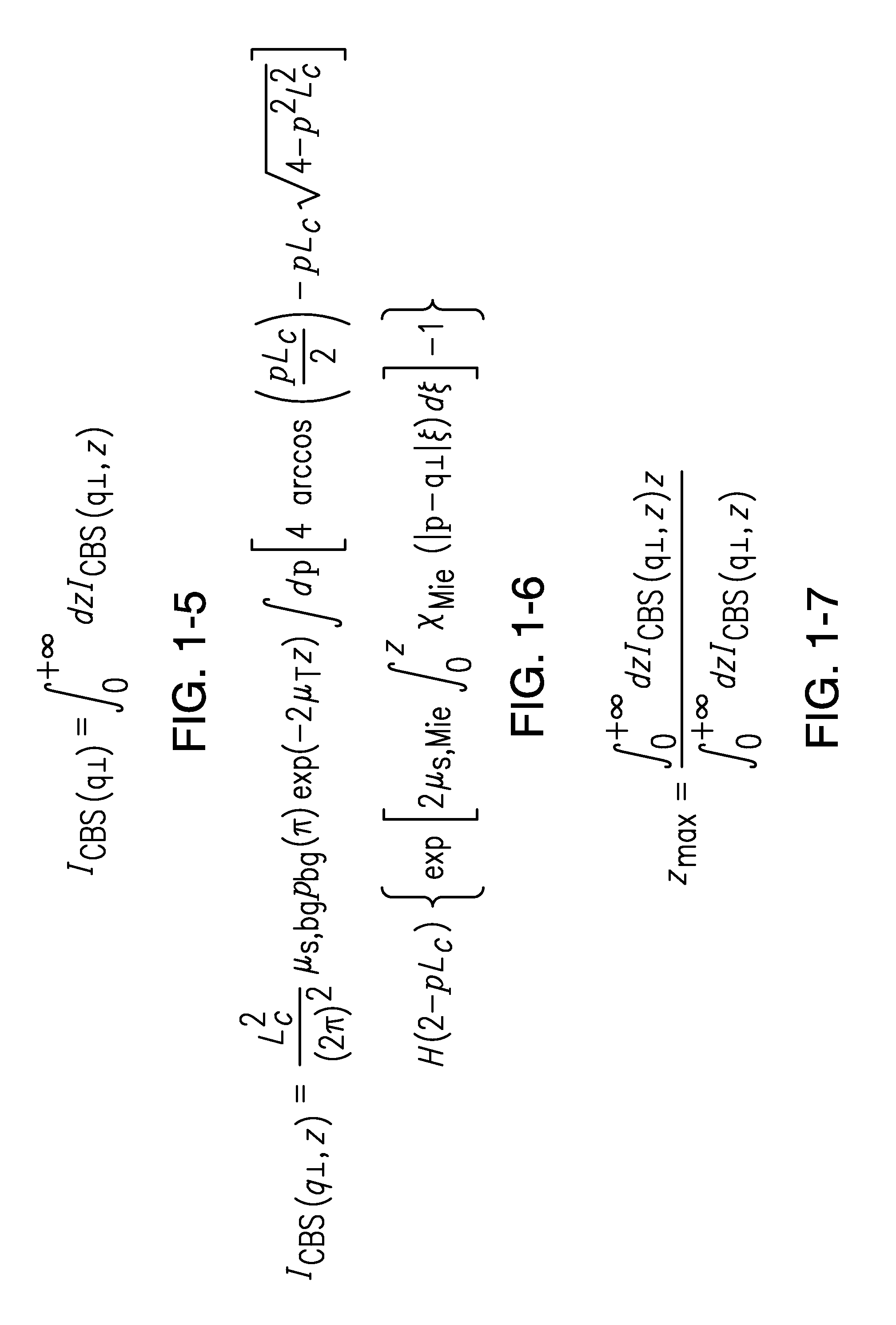Low coherence enhanced backscattering tomography and techniques
a backscattering tomography and low coherence technology, applied in the field of biophotonics or biomedical optics, can solve the problems of low reproducibility, difficult for oct to image structures, and current approaches such as diffuse optical tomography (dot) suffer from poor spatial resolution (5-10 millimeters), and achieve low coherence light, high resolution advantage, and enhanced backscattering tomography
- Summary
- Abstract
- Description
- Claims
- Application Information
AI Technical Summary
Benefits of technology
Problems solved by technology
Method used
Image
Examples
Embodiment Construction
[0025]LEBT and Biomedical Imaging
[0026]A LEBT technique according to the disclosure can image intact biological tissues at the microscopic scale ex vivo and in vivo based on optical contrast, extending LEBS to a three dimensional (3D) tomographic imaging modality. By detecting only low-order backscattering light via spatial coherence gating, LEBT solves the low spatial resolution problem due to light diffusion and achieves excellent depth selection. At the same time, low-order scattering light is sensitive to the microarchitecture and the molecular conformation of biological tissues, relating to physiological states such as the morphological alteration due to carcinogenesis and the oxygenation of hemoglobin.
[0027]Epithelial tissues have a multi-layered structure composed of a superficial cellular layer (epithelium) with a characteristic thickness of ˜100 μm. The main characteristics of light propagation in a turbid medium can be summarized by a set of length scales: the scattering m...
PUM
 Login to View More
Login to View More Abstract
Description
Claims
Application Information
 Login to View More
Login to View More - R&D
- Intellectual Property
- Life Sciences
- Materials
- Tech Scout
- Unparalleled Data Quality
- Higher Quality Content
- 60% Fewer Hallucinations
Browse by: Latest US Patents, China's latest patents, Technical Efficacy Thesaurus, Application Domain, Technology Topic, Popular Technical Reports.
© 2025 PatSnap. All rights reserved.Legal|Privacy policy|Modern Slavery Act Transparency Statement|Sitemap|About US| Contact US: help@patsnap.com



